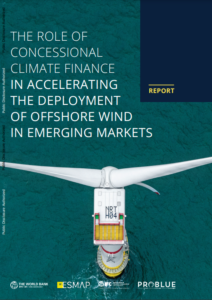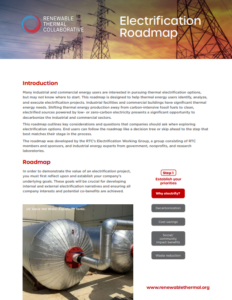The OurEnergyLibrary aggregates and indexes publicly available fact sheets, journal articles, reports, studies, and other publications on U.S. energy topics. It is updated every week to include the most recent energy resources from academia, government, industry, non-profits, think tanks, and trade associations. Suggest a resource by emailing us at info@ourenergypolicy.org.
Resource Library
From 2020 to 2023, SEI participated as a partner in the Better Buildings Workforce Accelerator. The BBWA is a Department of Energy (DOE) initiative seeking to raise the level of building science and energy efficiency knowledge in the nation’s building-related workforce. Through the BBWA, DOE engaged industry partners in activities that build interest and awareness, streamline pathways, and improve skills for people pursuing green building careers.…
View Full ResourceFrom 2020 to 2023, NEEC participated as a partner in the Better Buildings Workforce Accelerator (BBWA). The BBWA is a Department of Energy (DOE) initiative seeking to raise the level of building science and energy efficiency knowledge in the nation’s building-related workforce. Through the BBWA, DOE engaged industry partners in activities that build interest and awareness, streamline pathways, and improve skills for people pursuing green building careers. …
View Full ResourceIT for sustainability is a priority at large global companies, often including oversight or decision-making at the highest levels of leadership. Business leaders see a strong connection between IT and sustainability, are expecting to increase investment in IT for sustainability, and are confident in their ability to track and execute their sustainability goals.
Business leaders think that IT investments impact their organization’s sustainability and implement IT solutions for that purpose. …
View Full ResourceAn immediate need to decarbonize has accelerated sustainability up the corporate agenda. Whilst the growth in reporting has created an expansive list of pressing priorities.
But how are businesses preparing for the comprehensive and complex reporting landscape? Where are they investing today, and perhaps more pertinently in the years to come, to meet the needs of regulators and climate-conscious stakeholders? And how are today’s businesses strategizing to meet their sustainability ambitions?
The Reuters Impact Global Sustainability Report 2023 answers those pivotal questions, helping to inform your sustainability strategy, plan investment roadmaps and benchmark against your peers.
Their unique, proprietary dataset, …
View Full ResourceIt’s no secret utilities face several unprecedented challenges. In addition to decarbonization goals, they must incorporate a growing number of distributed energy resources (DERs) into distribution networks that are often encumbered by aging assets. Plus, consumer expectations are rising in step with the increasing electrification and digitalization of daily life.
The technology used for demand forecasting is one that has taken an evolutionary leap forward, and it’s not just investor-owned utilities (IOUs) and retailers using it. This paper outlines how artificial intelligence (AI) and machine-learning algorithms are being used to produce more accurate forecasts that generate cost savings and reduce …
View Full ResourceOffshore wind will be critical to achieve the world’s decarbonization and sustainable development goals. Although the cost of offshore wind has dropped dramatically over the past decade, there will be an initial cost premium when developing offshore wind in emerging markets due to a variety of risks and constraints in establishing a new market. Concessional climate finance could help countries overcome this initial cost barrier to help reduce costs for future projects and lay the foundation for the development of successful offshore wind markets.
This report from World Bank’s Energy Sector Management Assistance Program (ESMAP) and International Finance Corporation (IFC), …
View Full ResourceSub-Saharan Africa is uniquely positioned in the transition to a clean energy economy, as the region with the fastest-growing energy demand and lowest rate of access to reliable, clean, and affordable energy. Despite the substantial opportunity to improve lives and economies, there are flaws in the way we think and talk about energy in the region.
This brief identifies common misconceptions and gaps in research which need to be addressed for policy makers and investors to move forward with energy planning. Common myths of a uniform African continent and simplistic ideas of Africa’s abundant natural resources should be replaced by …
View Full ResourceShifting thermal energy production away from carbon-intensive fossil fuels to clean sources such as electrification where low- or zero-carbon electricity is used presents a significant opportunity to decarbonize the industrial and commercial buildings sectors. Many in the industrial and commercial sectors are interested in pursuing thermal electrification options, but some may not know where to start.
This roadmap is designed to help thermal energy users identify, analyze, and execute electrification projects. It categorizes what companies need to consider and the questions they need to ask while exploring electrification options.…
View Full ResourcePlummeting prices for wind, solar and storage have made them the cheapest choice for almost all new power projects. And yet, renewables still aren’t growing fast enough to meet our climate goals because financing risk continues holding them back. New Energy Innovation research highlights the biggest financing risks renewable projects face and how public policy can overcome them. Mitigating financing risk can lower renewable energy costs by up to 50 percent while speeding up deployment.
Because of significant reductions in the cost of clean energy, economics are no longer the prime barrier to expanding clean energy: Solar, onshore and offshore …
View Full ResourceThere is a consensus in the international community that geological repositories provide the necessary long-term safety and security to isolate long-lived radioactive waste. However, despite the technical merit and safety of repositories, challenges remain in many countries. These challenges include building and maintaining public confidence, the availability of skilled staff and the transfer of knowledge, as well as the involvement of younger professionals. As a synthesis of the Sixth International Conference on Geological Repositories (ICGR-6) hosted in Helsinki, Finland in April 2022, this report discusses the significant progress made in developing geological repositories over the past two decades and addresses …
View Full Resource








